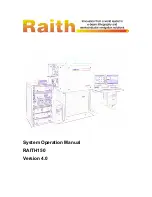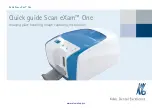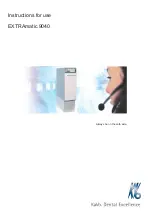
Ergovation.Doc 11-3-08 Rev. 8-26-09
P a g e
|
39
PN 230216
•
This product is to be used for positioning and suspension only,
NOT
FOR FALL ARREST
UNLESS USED WITH OPTIONAL RETROFIT HARNESS
. Therefore, it may be necessary
to supplement arrangements for work positioning / suspension with collective means (i.e. safety nets)
or personal means of protection against falls from a height (i.e. fall arrest system).
•
Destroy any and all equipment subjected to impact loading.
•
Never work without independent fall arrest protection if there is danger of a fall.
•
Keep equipment from coming into contact with sharp edges, extreme temperatures, excessive ultra
violet rays and chemical agents. Exposure to these elements may have a detrimental effect on the
integrity of the equipment.
•
Always visually check that all buckles are properly closed before use.
•
Attach only connecting devices meeting standards/regulations for intended use for positioning and
suspension to belt D-rings and attachment points.
•
Only positioning connecting devices should be attached to side D-rings, as side D-rings are not
intended for fall arrest or suspension.
•
Positioning and suspension anchor points, as a minimum, must support user’s weight plus all
additional job related loads. Fall arrest anchor points must support a minimum of 5000 pounds per
attached worker and be independent of worker support.
•
As a minimum the materials used in the manufacture of this product are acceptable for use under all
normal environmental conditions tolerable to humans.
•
Always visually check that each snap hook freely engages D-ring or anchor point and keeper is
completely closed with each use.
Never
rely solely on the feel or sound of a snap hook engaging.
•
Before each use check that: 1) fabric or belt strap is free of burns, cuts, broken stitches or excessive
wear, 2) rivets are not bent, loose or missing, 3) buckles and D-rings are not distorted or cracked, 4)
if there is a tongue buckle, that the tongue does not bind on the buckle and buckle holes are not
damaged. Always remove from service, destroy and discard belt or harness if it fails inspection.
•
Always use locking snap hooks or locking carabiners as outlined in the ANSI Z133.1 standards for
suspension, work positioning and fall arrest.
•
When in the work position, ensure there is no pressure on the snap hook locking mechanism sufficient
to depress it as this will, due to its length, render it incompatible with currently designed D-rings and
make it very susceptible to rollout.
•
During use all fastening and adjusting elements must be regularly checked to ensure adjustment and
closure.
•
Never attach multiple snap hooks to a D-ring unless they are of the locking type and designed for such
attachment.
•
Never disable locking keeper on snap hook or carabiner.
•
Never punch additional holes in or alter any belt or harness in any way.
•
Product covered under these instructions / warnings should not be resold / redistributed or re- used
after
use by original user.
Equipment Inspection
Prior to each use
:
Carefully inspect this equipment for indications of wear or deterioration. Inspection should include, but
not be limited to the following:
• webbing cuts, kinks, abrasions, burns, excessive swelling, excessive wear, discoloration, cracks,
charring,
broken fibers, loose stitching, chemical or physical exposures and buckle holes in strap are not
damaged.
• loose, bent or pulled rivets, bent grommets, and broken, cut, or burned threads
• tongue of buckle does not bind on buckle frame
• nicks, cracks, distortion or corrosion of hardware (buckle, D-ring, etc.)


































